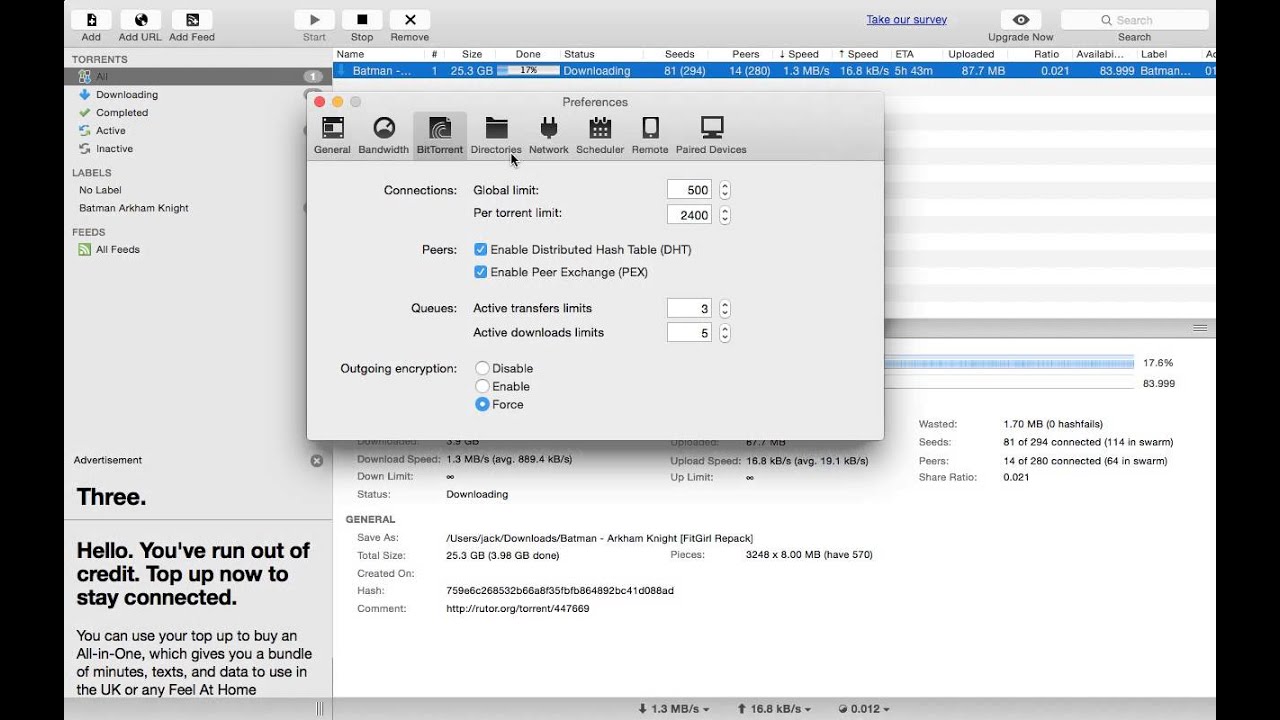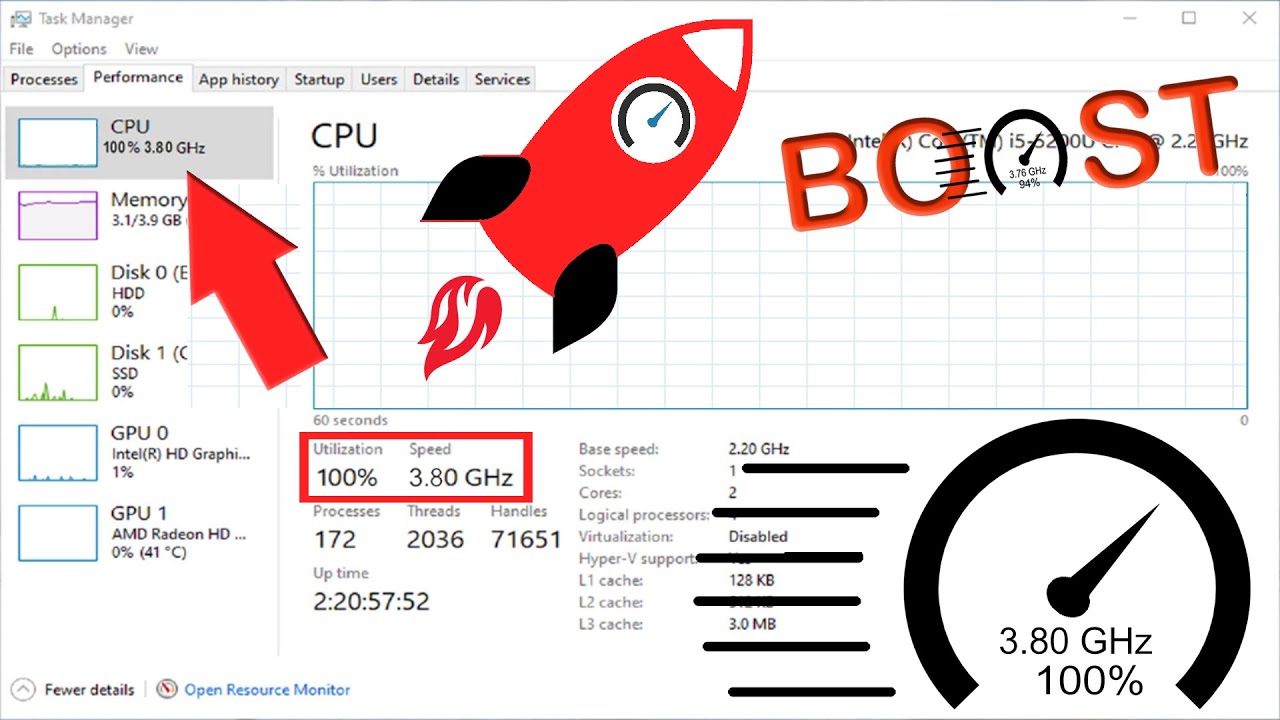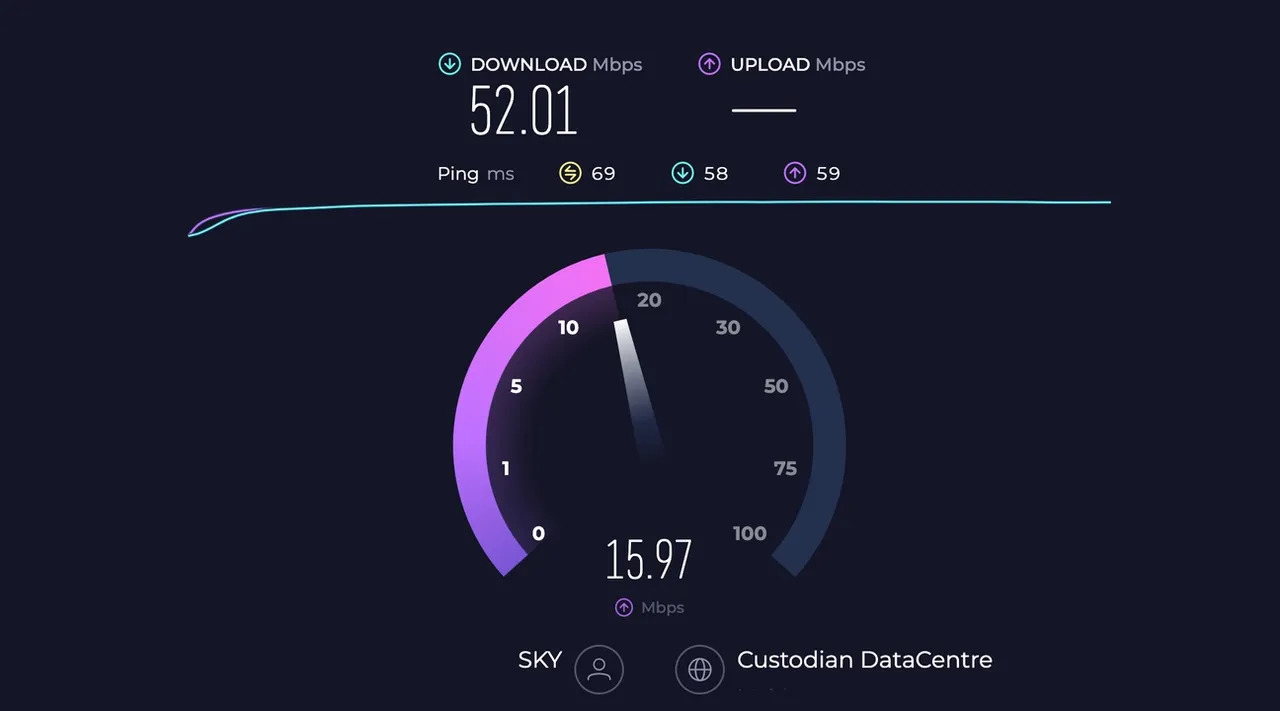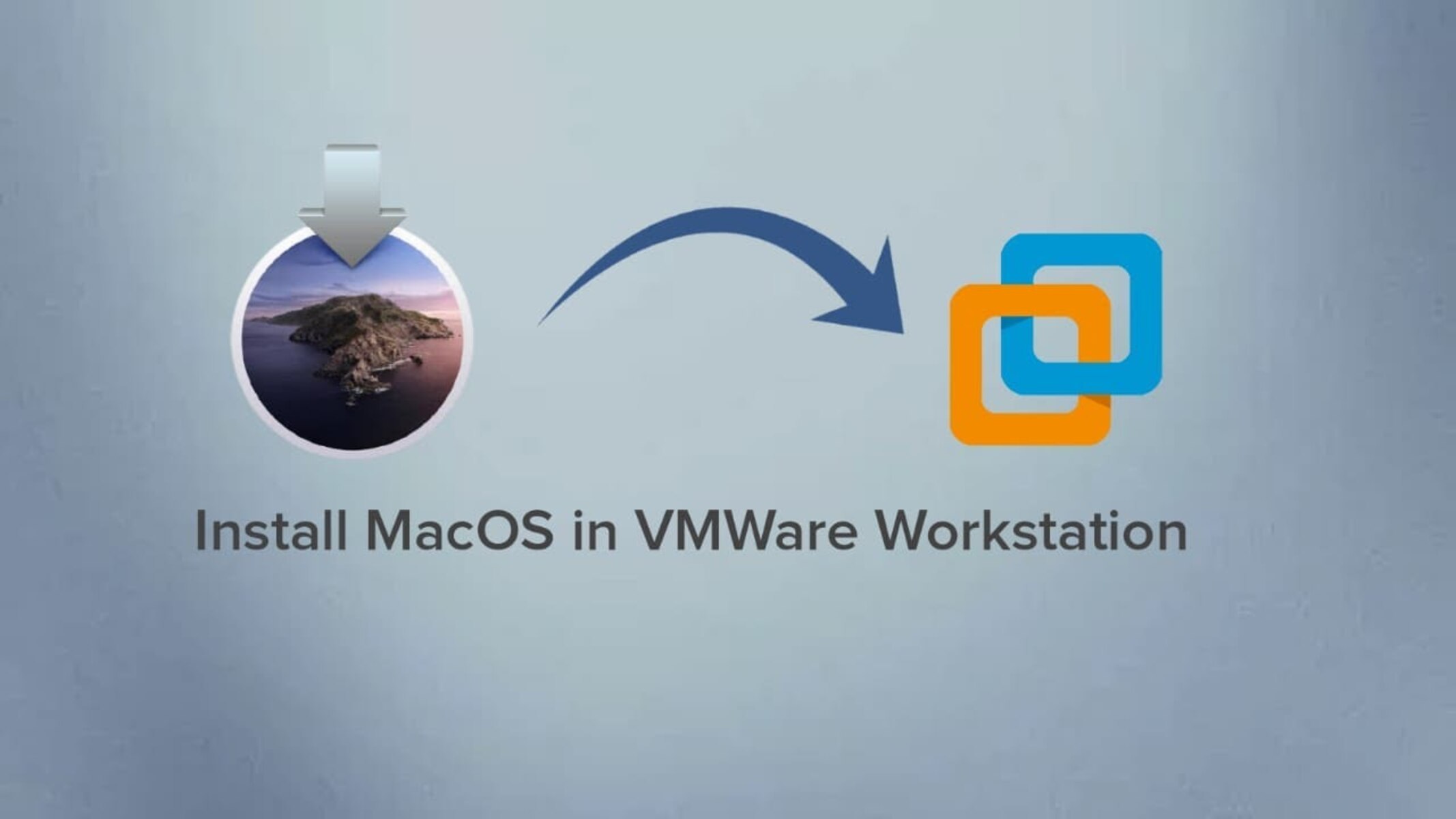Introduction
When it comes to downloading files on your Mac, nothing can be more frustrating than slow download speeds. Whether you’re trying to download a large file or simply want to speed up your everyday downloads, there are several steps you can take to increase the download speed on your Mac. In this article, we will explore various methods and techniques to optimize your Mac’s download speed and make the process more efficient.
Having a fast internet connection is crucial for downloading files quickly, but even with a high-speed connection, there are other factors that can affect your download speed. Issues like network congestion, hardware limitations, and software configurations can all contribute to slower download speeds.
Fortunately, there are several steps you can take to overcome these obstacles and boost your Mac’s download speed. By optimizing your internet connection, clearing system cache, disabling bandwidth-hogging applications, and using download accelerators, you can significantly improve your download speeds and enhance your overall downloading experience.
In the following sections, we will explore each method in detail, providing step-by-step instructions to help you increase the download speed on your Mac. Whether you’re a casual downloader or rely on fast downloads for work or entertainment, these techniques will help you optimize your Mac’s performance and ensure faster downloads.
Check your internet connection
Before diving into any technical solutions, it’s essential to start by checking your internet connection. The speed of your internet connection plays a vital role in determining the download speed on your Mac. Here are a few steps to help you evaluate and potentially improve your internet connection:
1. Run a speed test: Use an online speed test tool like Ookla or Fast.com to measure your internet speed. This will give you an idea of the download and upload speeds you’re getting. If the speeds are significantly lower than what you’re expecting, contact your internet service provider (ISP) to address any issues with your connection.
2. Check for network congestion: Multiple devices connected to your network can lead to network congestion, resulting in slower download speeds. Try disconnecting unnecessary devices or pausing any bandwidth-hogging activities like streaming movies or online gaming while you perform your downloads.
3. Use a wired connection: If you’re using Wi-Fi, switch to a wired ethernet connection. Wired connections generally offer more stability and faster speeds compared to wireless connections, especially if you’re far from the router. This can make a significant difference, especially when downloading large files.
4. Reset your modem and router: Sometimes, a simple reset can solve network issues. Turn off your modem and router, wait for a minute, and then turn them back on. This can help clear any temporary glitches and provide a fresh start to your network connection.
5. Check for physical interference: Ensure that there are no physical obstacles like walls, furniture, or other devices blocking the signal between your Mac and the Wi-Fi router. By keeping the path clear, you can improve the signal strength and optimize your Wi-Fi connection.
By taking these steps to check and optimize your internet connection, you can eliminate any potential bottlenecks and ensure that your Mac is receiving a stable and fast connection. This will lay the groundwork for improving your overall download speed and enhancing your downloading experience.
Close unnecessary applications and processes
When it comes to maximizing your Mac’s download speed, it’s important to ensure that your system’s resources are being utilized effectively. One common factor that can slow down your download speed is the presence of unnecessary applications and processes running in the background. Here are some steps to close these unwanted applications and streamline your Mac’s performance:
1. Identify resource-intensive applications: Open the Activity Monitor by searching for it in the Spotlight search (Cmd + Space) or navigating to the Applications > Utilities folder. In the Activity Monitor, click on the “CPU” tab to sort applications by their CPU usage. Take note of any applications that are using a significant portion of the CPU resources.
2. Quit unused applications: Once you’ve identified resource-intensive applications, close the ones that you’re not actively using. To do this, select the application in the Activity Monitor and click on the “X” button at the top-left corner of the window, or right-click and choose “Quit.” Closing these applications will free up system resources and potentially boost your download speed.
3. Disable startup applications: Some applications automatically launch upon startup, consuming valuable system resources. To prevent these applications from running every time you start your Mac, go to System Preferences > Users & Groups > Login Items. From there, select the applications you don’t need to launch at startup and click on the “-” button to remove them from the list.
4. Clear up memory resources: If your Mac is running low on available memory, it can impact the overall system performance, including download speeds. To free up memory resources, close unnecessary browser tabs, and remove any large files or applications that you no longer need.
By closing unnecessary applications and processes, you can optimize your Mac’s resources and ensure that they are dedicated to downloading files. This will help improve your download speed and allow for a smoother downloading experience.
Clear your system cache
Over time, your Mac accumulates temporary files and cache data that can clog up system resources and potentially slow down your download speed. Clearing your system cache can help improve performance and boost your download speed. Here’s how to clear your cache:
1. Clear browser cache: If you primarily download files through your web browser, clearing the cache can help improve your download speed. In most browsers, you can access the cache-clearing option through the settings or preferences menu. Look for options like “Clear browsing data” or “Clear cache” and select the appropriate time range (e.g., “All time” or “Last hour”). This will remove any temporary files stored by the browser and may improve download speed.
2. Clear system cache files: Your Mac generates various cache files to speed up operations and enhance performance. However, these cache files can accumulate and consume unnecessary disk space, potentially impacting your download speed. To clear system cache files, follow these steps:
- Open Finder and click on “Go” in the menu bar.
- Hold down the Option key and select “Library” from the dropdown menu.
- Navigate to the “Caches” folder.
- Select and delete the cache files of applications you no longer use or recognize.
3. Use a cache clearing tool: There are several third-party cache cleaning tools available that can automate the cache clearing process. These tools can help you easily remove cache files from multiple applications, system-wide caches, and even optimize your Mac’s performance. Examples of popular cache cleaning tools include CleanMyMac and Onyx.
Clearing your system cache regularly can help improve the overall performance of your Mac and potentially enhance your download speed. By removing unnecessary temporary files and cache data, you’ll free up valuable system resources and create a more streamlined environment for downloading files.
Disable bandwidth-hogging applications and plugins
Some applications and plugins on your Mac can consume a significant amount of bandwidth, causing slower download speeds. By identifying and temporarily disabling these bandwidth-hogging elements, you can prioritize your network resources and improve your download speed. Here are a few steps to help you accomplish this:
1. Monitor network activity: Use the Activity Monitor as mentioned earlier to identify applications or processes that are utilizing a substantial amount of network bandwidth. Look for applications that constantly transfer data or have a high network usage percentage. These applications might include file-sharing programs, video streaming services, or cloud backup services.
2. Pause or close bandwidth-intensive applications: If you notice any applications using a significant amount of network resources, consider pausing or closing them while you download files. Many streaming applications, for example, allow you to temporarily pause downloads or reduce the quality of the streamed content, which can free up bandwidth for faster file downloads.
3. Disable browser extensions and plugins: Some browser extensions and plugins can also consume bandwidth, especially if they constantly update in the background or load resource-intensive content. Disable or remove unnecessary extensions or plugins in your web browser to reduce the strain on your network connection and potentially boost your download speed.
4. Schedule automatic updates: Configure your applications, including your operating system and antivirus software, to schedule updates during non-peak hours or to notify you before downloading and installing updates. Running updates in the background while you’re actively downloading files can significantly slow down your overall download speed.
By disabling bandwidth-hogging applications and plugins, you can ensure that your Mac’s network resources are dedicated to your file downloads. This can help optimize your download speed and provide a smoother downloading experience.
Use a download manager or accelerator
If you frequently download large files or experience consistently slow download speeds on your Mac, using a dedicated download manager or accelerator can significantly enhance your downloading experience. These tools offer advanced features that optimize the download process and can help boost your download speeds. Here’s how you can benefit from using a download manager or accelerator:
1. Increase download speed: Download managers and accelerators utilize techniques like segmentation, parallel downloading, and dynamic file allocation to optimize the download process. By breaking the file into smaller parts and downloading them simultaneously, these tools can maximize your available bandwidth and increase your download speeds. This can be particularly effective when downloading large files or when you have a slow internet connection.
2. Pause and resume downloads: One advantage of using a download manager is the ability to pause and resume downloads. This feature is especially useful when downloading large files that may take a significant amount of time. You can pause the download at any point, and then resume it later without having to start from the beginning. This can be beneficial if you experience a sudden interruption in your internet connection or need to free up bandwidth for other tasks.
3. Manage download priorities: Download managers allow you to prioritize your downloads, giving you control over which files are downloaded first. This can be useful when you have multiple files in the download queue and want to ensure that the most important or time-sensitive files are downloaded promptly. By managing the download priorities, you can optimize your download speed and efficiently organize your downloads.
4. Automatic error recovery: Download managers often come equipped with automatic error recovery mechanisms. If your download is interrupted due to a network error or connection problem, the download manager can automatically attempt to reconnect and resume the download from where it left off. This feature eliminates the need to manually restart the download and can save you time and frustration.
There are numerous download managers and accelerators available for Mac users, both free and paid. Some popular options include Folx, Internet Download Manager (IDM), and JDownloader. Research and choose a download manager that best fits your requirements and start enjoying faster, more efficient downloads on your Mac.
Update your Mac’s software
Keeping your Mac’s software up to date is crucial for optimal performance, including download speeds. Regular updates from Apple often include improvements and bug fixes that can enhance system functionality and address any potential issues that may affect your download speeds. Here’s why it’s important to update your Mac’s software:
1. Performance enhancements: Software updates often include performance optimizations that can improve the overall speed and efficiency of your Mac. These updates may include improvements to the operating system, networking protocols, or drivers that can directly impact your download speeds. By keeping your Mac’s software up to date, you can ensure that you’re getting the most out of your system’s capabilities.
2. Security patches: Software updates also include critical security patches that protect your Mac from potential vulnerabilities. Cyber threats, such as malware or hacking attempts, can compromise your system’s performance and, in some cases, even hijack your internet connection. By regularly updating your Mac’s software, you minimize the risks associated with these security vulnerabilities and maintain a more secure computing environment.
3. Compatibility improvements: Updates to your Mac’s software often include compatibility enhancements for various applications, including web browsers and download managers. These updates ensure that your system is compatible with the latest technologies and protocols, allowing for smoother and faster downloads. By keeping your software up to date, you avoid potential compatibility issues that can hinder download performance.
Updating your Mac’s software is a straightforward process. Simply follow these steps:
- Click on the Apple menu in the top-left corner of your screen and select “System Preferences.”
- Click on “Software Update.”
- If updates are available, click on “Update Now” to download and install the updates.
- Restart your Mac if prompted to complete the update process.
By regularly updating your Mac’s software, you ensure that your system is equipped with the latest performance enhancements, security patches, and compatibility improvements. This can positively impact your download speeds and overall Mac experience.
Check your DNS settings
The Domain Name System (DNS) is responsible for translating domain names into IP addresses, allowing your Mac to connect to websites and servers. If the DNS settings on your Mac are misconfigured or slow, it can result in slower download speeds. Checking and optimizing your DNS settings can help improve your download speed. Here’s how you can do it:
1. Use a reliable DNS server: By default, your Mac uses the DNS server provided by your internet service provider (ISP). However, these DNS servers may not always be the fastest or most reliable. You can improve your download speed by using a public DNS server, such as Google DNS or Cloudflare DNS. To change your DNS server, follow these steps:
- Click on the Apple menu in the top-left corner of your screen and select “System Preferences.”
- Click on “Network.”
- Select your active network connection (Wi-Fi or Ethernet) on the left-hand side.
- Click on the “Advanced” button in the bottom-right corner.
- Navigate to the “DNS” tab.
- Click on the “+” button and add the IP addresses of the desired DNS servers (e.g., 8.8.8.8 for Google DNS).
- Click “OK” to save the changes.
2. Flush DNS cache: Sometimes, outdated or corrupt DNS cache entries can slow down your browsing and download speeds. Flushing the DNS cache can help resolve this issue. To flush the DNS cache on your Mac, follow these steps:
- Open the Terminal app. You can find it in Applications > Utilities or by using Spotlight search.
- Type the following command and press Enter:
sudo dscacheutil -flushcache - Enter your administrator password when prompted.
3. Disable IPv6: In some cases, having both IPv4 and IPv6 enabled on your Mac can lead to slower download speeds. If you’re experiencing slow downloads, you can try disabling IPv6 and see if it improves your speed. To do this, follow these steps:
- Go to System Preferences > Network.
- Select your active network connection.
- Click on the “Advanced” button in the bottom-right corner.
- Navigate to the “TCP/IP” tab.
- Set the Configured IPv6 option to “Off.”
- Click “OK” to save the changes.
By checking and optimizing your DNS settings, you can ensure that your Mac is efficiently translating domain names and connecting to the internet. This can result in improved download speeds and a more seamless browsing experience.
Restart your modem or router
If you’re experiencing slow download speeds on your Mac, one simple yet effective troubleshooting step is to restart your modem or router. Over time, these networking devices can encounter various issues that may impact your download speeds. Restarting them can help refresh the connection and potentially resolve any temporary glitches. Here’s how you can restart your modem or router:
1. Locate your modem and router: Identify the physical devices that provide your internet connection. The modem is usually connected directly to the wall outlet, while the router connects to the modem and distributes the internet connection to your devices.
2. Power off the devices: Locate the power cord for both the modem and router. Unplug them from the power source or simply turn off the power switches, if available. Wait for about 30 seconds to a minute, allowing the devices to fully power down. This step ensures that any temporary issues are cleared.
3. Power on the devices: Plug the power cord back into the modem first and wait for it to fully power on. Once the modem lights indicate that it has established a connection, turn on the router by plugging in its power cord. Allow both devices to fully boot up and establish a stable connection.
4. Test your download speed: After restarting your modem and router, run a speed test to check if your download speeds have improved. Use an online speed test tool like Ookla or Fast.com to measure your internet speed. If the speeds are still slow, you can try restarting your Mac as well to ensure a fresh connection.
Restarting your modem and router can often resolve common networking issues that may cause slow download speeds. By refreshing the connection and allowing the devices to establish a stable connection, you can potentially improve your download speeds and ensure a smoother browsing experience.
Optimize your Wi-Fi connection
If you’re using Wi-Fi to connect your Mac to the internet, optimizing your Wi-Fi connection can play a significant role in improving your download speeds. Here are several steps you can take to optimize your Wi-Fi connection and enhance your download experience:
1. Position your router strategically: The physical location of your Wi-Fi router can affect the signal strength and coverage. Place your router in a central location, away from obstructions like walls or electronic devices that may interfere with the signal. Ideally, the router should be elevated and have a clear line of sight to your Mac.
2. Switch to a less congested channel: Wi-Fi signals can overlap and interfere with neighboring networks, causing slower speeds. If you’re experiencing slow Wi-Fi speeds, you can try switching to a less congested Wi-Fi channel. You can access your router’s settings by typing its IP address into a web browser. Look for the Wi-Fi channel settings and choose a channel with less interference.
3. Use a Wi-Fi extender or mesh system: If you have a large home or office space and experience weak Wi-Fi signal in certain areas, consider using a Wi-Fi extender or mesh system. These devices can help extend the coverage and improve the signal strength, allowing for better download speeds throughout your space.
4. Update your router’s firmware: Router manufacturers frequently release firmware updates to improve performance and address security vulnerabilities. Check the manufacturer’s website for any available firmware updates for your router model. Upgrading to the latest firmware can help optimize your Wi-Fi connection and potentially improve your download speeds.
5. Minimize interference from other devices: Other electronic devices, such as cordless phones, baby monitors, and microwave ovens, can interfere with your Wi-Fi signal. Keep these devices away from your router and Mac, as they can disrupt the Wi-Fi connection. Additionally, Bluetooth devices can also cause interference, so try to keep them away from your Mac when downloading files.
6. Use a Wi-Fi analyzer tool: Wi-Fi analyzer tools can help you identify and troubleshoot Wi-Fi issues in your surroundings. These tools scan the Wi-Fi spectrum and provide information about the signal strength, channel congestion, and neighboring networks. By using a Wi-Fi analyzer app on your smartphone or a dedicated tool for your Mac, you can find the optimal Wi-Fi settings for better download speeds.
By optimizing your Wi-Fi connection, you can maximize your download speeds and ensure a stable and reliable internet connection. These steps will help you make the most out of your Wi-Fi network and enhance your overall download experience on your Mac.
Conclusion
Slow download speeds on your Mac can be frustrating, but with the right techniques and optimizations, you can significantly improve your download experience. By following the steps outlined in this article, you can increase your download speed and make the most out of your Mac’s capabilities.
Start by checking your internet connection and ensuring that you have a stable and reliable connection. Close unnecessary applications and processes that may be hogging your system resources and slowing down your download speeds. Clearing your system cache can free up valuable space and optimize your Mac’s performance.
Don’t forget to disable bandwidth-hogging applications and plugins that might be consuming excessive network resources. Consider using a dedicated download manager or accelerator to enhance your download speeds through segmentation, parallel downloading, and other optimization techniques.
Keep your Mac’s software up to date to benefit from performance enhancements, security patches, and compatibility improvements. Regularly check and optimize your DNS settings to ensure fast and reliable translations of domain names to IP addresses. And if you’re using Wi-Fi, optimize your connection by strategically positioning your router, switching to a less congested channel, and considering Wi-Fi extenders or mesh systems for larger spaces.
Remember, troubleshooting slow download speeds may require trying multiple methods to pinpoint the cause. It’s important to monitor and test your download speeds after each optimization step to identify the most effective solutions for your specific situation.
By implementing these strategies, you can improve your download speed on your Mac and enjoy a faster and more efficient downloading experience.












![Top 4 Ways to Download YouTube Videos in 2024 [For PC/Mac/Android/iOS]](https://robots.net/wp-content/uploads/2023/12/How-to-download-YouTube-videos-300x150.png)












